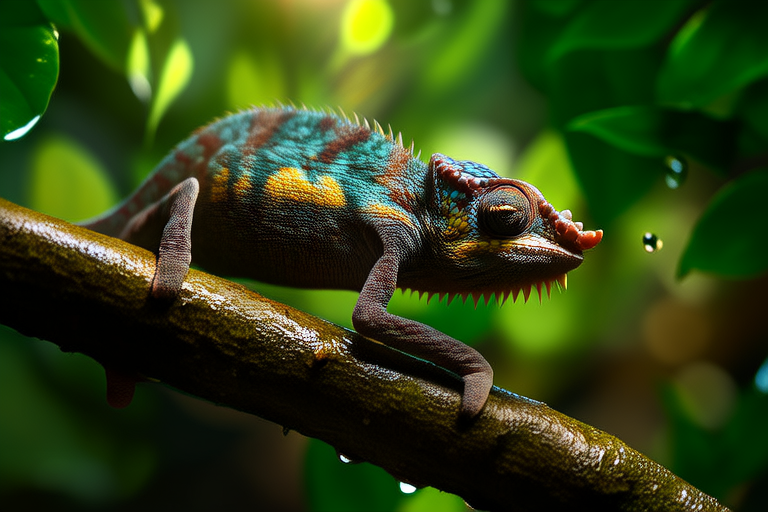From Jungle to Home: The Ultimate Guide to Caring for Your Chameleon
Welcome to the fascinating world of chameleons! These unique reptiles, known for their remarkable ability to change color, have captured the hearts of many animal enthusiasts. However, caring for a chameleon requires more than just admiration; it demands dedication, patience, and a deep understanding of their specific needs. This guide will walk you through everything from setting up the perfect habitat to addressing common health issues, ensuring your chameleon thrives in its new home.
Choosing the Right Habitat Setup
The first step in creating a suitable environment for your chameleon is selecting the right enclosure. Chameleons need vertical space to climb, so choose a tall terrarium that allows them ample room to move around. A minimum size of 24 inches wide by 36 inches tall is recommended for most species. Ensure the enclosure has proper ventilation to maintain air circulation and prevent the buildup of harmful bacteria.
Essential Equipment
- Basking Spot: Install a heat lamp to provide a basking spot where the temperature reaches between 90-100°F (32-38°C).
- UVB Lighting: Essential for calcium metabolism, UVB lamps should be replaced every six months to ensure they’re functioning correctly.
- Humidity Control: Use misters or humidifiers to maintain humidity levels between 50-70%.
- Vine Branches and Plants: Provide plenty of branches and live plants for climbing and hiding.
Temperature and Lighting Requirements
Chameleons are ectothermic, meaning they rely on external heat sources to regulate their body temperature. A daytime gradient of 75-85°F (24-29°C) with a basking spot at 90-100°F (32-38°C) is ideal. At night, temperatures can drop slightly to 65-75°F (18-24°C). Proper lighting is crucial for their well-being; UVB light helps them synthesize vitamin D3, which aids in calcium absorption. Place the UVB lamp approximately 12 inches above the basking spot.
Diet Specifics
A balanced diet is vital for your chameleon’s health. Insects such as crickets, dubia roaches, and mealworms should make up the bulk of their diet. Dust these insects with a calcium supplement twice weekly and a multivitamin once a week. Offer fresh greens like collard greens, mustard greens, and dandelion leaves daily. Always gut-load feeder insects by feeding them nutritious foods before offering them to your chameleon.
Handling Tips
While tempting, it’s important to limit handling to avoid stressing your chameleon. If you must handle them, support their entire body gently and avoid grabbing them by the tail. Frequent handling can cause stress and potential injuries. Instead, observe them from a distance to ensure they’re comfortable in their environment.
Common Health Issues
Metabolic bone disease (MBD) is one of the most common health issues in chameleons, often caused by inadequate calcium intake or improper lighting. Signs include lethargy, swollen limbs, and difficulty moving. Regular veterinary checkups and monitoring for any unusual behavior are key to maintaining your chameleon’s health.
Advice for New Owners
Starting with a captive-bred chameleon is highly recommended to ensure its health and reduce the risk of introducing parasites. Research extensively before bringing one home, and consider joining local reptile clubs or online forums for additional support. Patience and consistency are key when setting up the enclosure and adjusting to your new pet’s routine.
Inspiring Stories and Testimonials
One owner, Sarah Thompson, shares her experience: “When I first brought my chameleon home, I was overwhelmed by the responsibility. But after setting up the correct habitat and learning about their dietary needs, she has become an integral part of our family. Her vibrant colors and playful nature remind me daily why I chose to care for her.”
Another success story comes from John Davis, who adopted a chameleon with health issues: “With the help of my vet and a lot of research, we managed to get him healthy again. It was a challenging journey, but seeing him thrive made all the effort worthwhile.”
These stories highlight the rewarding experience of caring for a chameleon. With the right knowledge and commitment, you too can provide a loving home for one of these incredible creatures.
